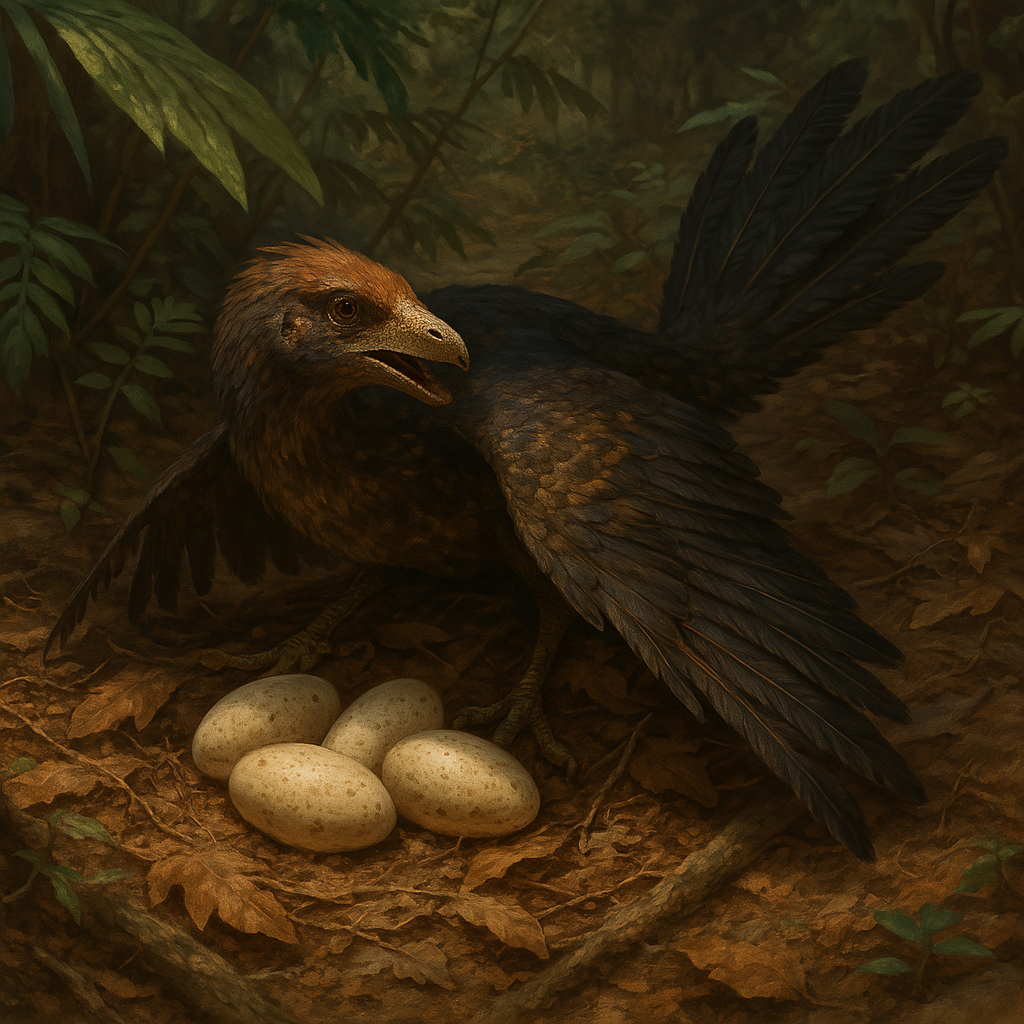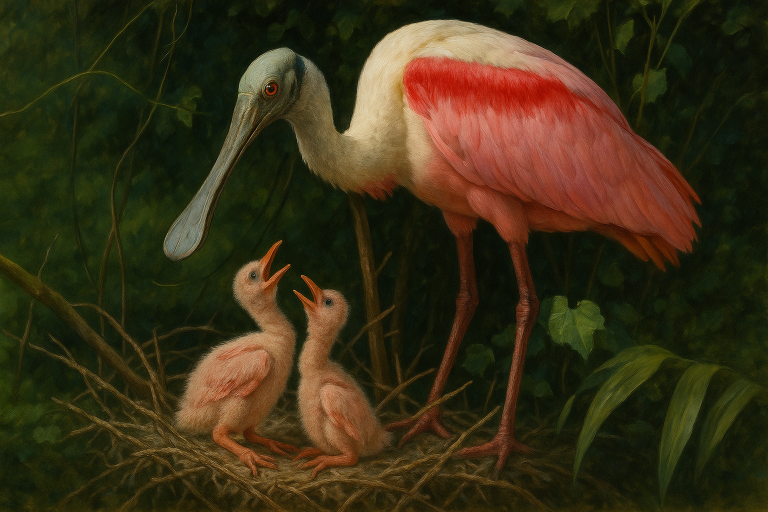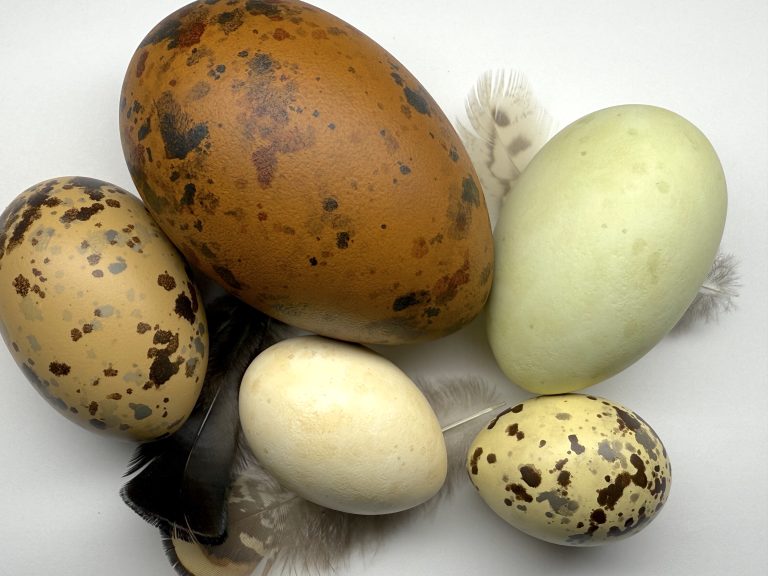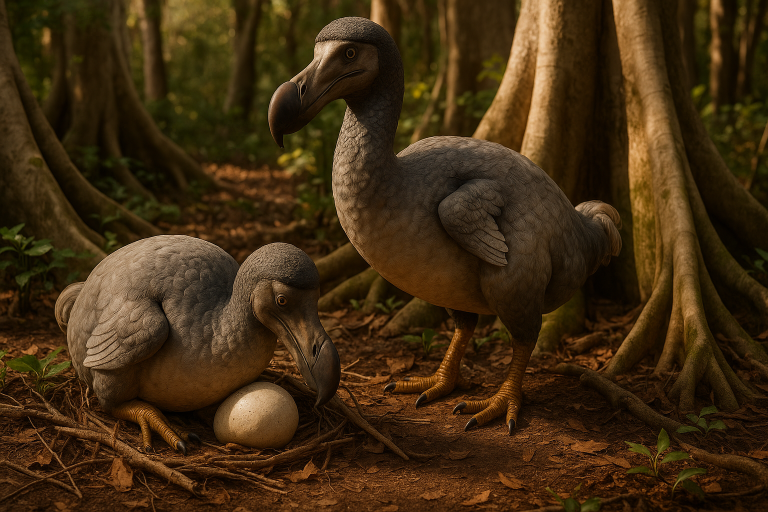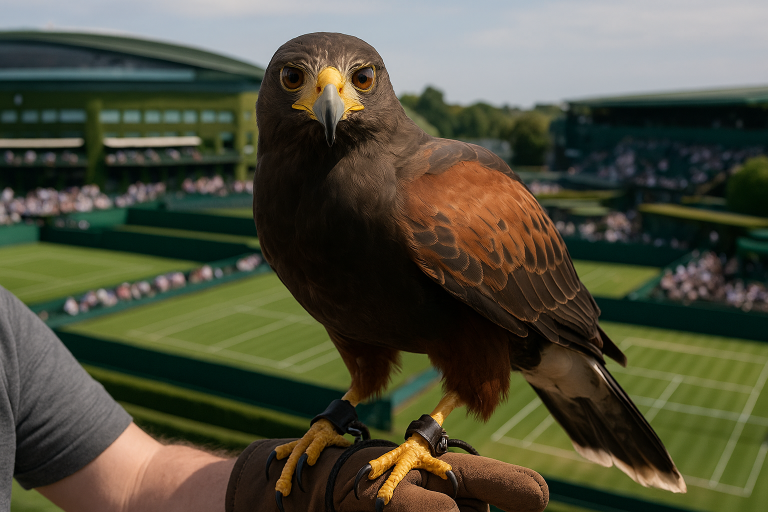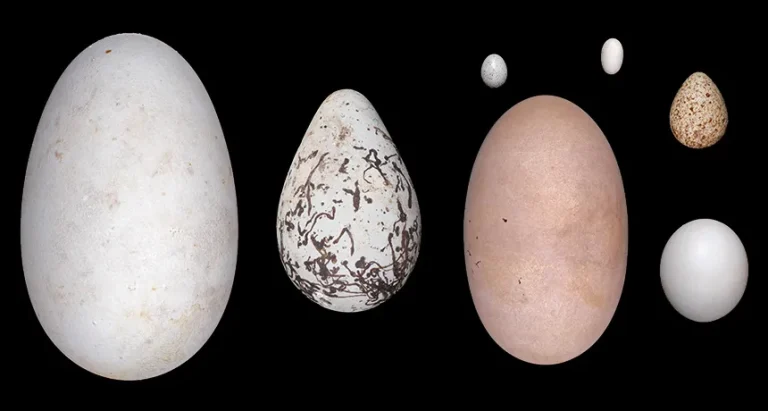Reconstructing Mesozoic Bird Eggs Using Non-Invasive Methods
Introduction and Challenges
Reconstructing the size, shape, surface texture, and coloration of extinct Mesozoic bird eggs is challenging because actual egg specimens from Mesozoic birds are extremely rare [1]. Paleontologists must rely on indirect, non-destructive methods to infer these characteristics for museum displays and scientific understanding. Techniques range from comparing fossil evidence to modern eggs, analyzing nesting site traces and eggshell microstructure, employing advanced imaging (CT scans, photogrammetry), to chemical and statistical analyses. By using a combination of these approaches, researchers can make educated estimations of what the eggs of long-extinct avian species looked like while preserving the integrity of precious fossils. Here we outline key non-invasive methods and their applications, with examples from recent scientific literature.
Comparative Analysis with Modern Eggs
One foundational approach is to compare extinct bird eggs (or their traces) with modern bird and reptile eggs. This comparative method operates under the principle of phylogenetic bracketing: traits of extinct birds are inferred from their nearest living relatives (birds) and closely related dinosaurs [2]. Key aspects include:
- Allometric Scaling: Body size provides clues to egg size. In modern birds, egg mass generally correlates with female body mass. Paleontologists use this relationship to estimate egg dimensions for extinct birds. For example, Deeming & Mayr (2018) used the pelvic canal width in 21 Mesozoic bird fossils to estimate maximum egg breadth and volume [1]. They found that early Mesozoic birds likely laid relatively small eggs (only about half the expected volume for a bird of that body size) – implying a reproductive constraint in early avians. This method has also been applied to larger extinct birds outside the Mesozoic; in one study, researchers used body metrics (like femur length) to predict egg size for giant Pleistocene birds where eggs are unknown [3].
- Modern Bird vs Reptile Egg Traits: Many characteristics of bird eggs (hard calcium carbonate shell, asymmetrical shape, relatively large size for body mass) evolved from non-avian dinosaur ancestors [2]. For instance, theropod dinosaurs closely related to birds (like oviraptorids and troodontids) had elongated, hard-shelled eggs with some bird-like features. Troodon, a bird-like dinosaur, laid asymmetric eggs similar to modern bird eggs rather than the nearly spherical eggs typical of reptiles [4]. These eggs’ asymmetry (one end more pointed) suggests an adaptation for better fit and gas exchange (air sac) as seen in bird eggs. By contrast, crocodilians (distant relatives) have completely symmetric, white eggs, so a Mesozoic egg showing asymmetry is a strong clue of avian affinities.
- Extant Analogues for Shape and Texture: The shape and surface texture of unknown eggs can be hypothesized by analogy to eggs of living species with similar ecology or taxonomy. For example, seabird eggs today are often more elongated or pyriform (pear-shaped) to prevent rolling off cliffs. If an extinct bird is interpreted as a cliff-nester from its skeletal and environmental context, one might infer similarly shaped eggs. Likewise, ground-nesting birds that cover their eggs tend to have uniform, matte eggs, whereas open-nesting birds often have camouflaged patterns. These ecological correlates from living birds provide models for reconstructing their Mesozoic counterparts’ eggs in museums. Such comparisons must be made carefully, but they are guided by evolutionary context (e.g. enantiornithine birds might be expected to have had smaller clutches of relatively elongated eggs, bridging reptilian and modern bird characteristics) [2].
Nesting Site Architecture and Eggshell Clues
Clues from the nesting environment, eggshell fragments, and associated fossils can greatly inform reconstructions. These lines of evidence are often non-destructive to collect (field observations, microscopy) and can hint at egg size, shape, and even how the eggs were incubated:
- Nesting Site Layout: Fossilized nests and clutch arrangements provide direct insight into egg size/shape and how they were laid. For example, some non-avian theropods built open nests on the ground in which eggs were arranged in a circular clutch. Oviraptor dinosaurs from the Late Cretaceous famously laid eggs in a donut-shaped ring – pairs of elongate eggs were laid in a circular arrangement, likely two at a time from two oviducts [2]. This ring arrangement, with eggs pointed inward, suggests the parent sat at the center of the nest without directly crushing the eggs. By comparison, if a Mesozoic bird fossil is found in association with a tight cluster of egg impressions or a particular nest structure, paleontologists can infer how the eggs were oriented (upright, on their sides, etc.) and spaced. For instance, Troodon nests show eggs half-buried upright in sediment, indicating a need for elongated eggs that could be planted vertically [4]. Such evidence of upright, partially buried eggs implies a shape (elongate, asymmetrical) and an incubation style (partial burial with adult likely brooding from above) akin to some modern megapode birds.
- Eggshell Microstructure: Even tiny eggshell fragments can be diagnostic. Using high-powered microscopes (often scanning electron microscopes) non-invasively on broken shell pieces, researchers examine the microscopic layering and pore structure. Microstructural features – such as the number of calcite layers in the shell, the size and density of pores, and the pattern of crystalline units – are distinctive for different groups. Modern bird eggshells typically have three layers (mammillary, palisade/prismatic, and outer cuticle) and relatively low porosity (small, sparse pores) since bird eggs are usually incubated in open air. In contrast, many reptiles and some primitive dinosaurs have more porous shells (for buried incubation) or fewer layers. When an egg’s microstructure is found, it can identify the egg as avian or not. A striking example is a small Late Cretaceous egg from Mongolia: its shell has a tri-layered structure with narrow pores, which led scientists to reclassify it as an enantiornithine bird egg rather than a dinosaur egg. This finding eliminated a previously puzzling misidentification and showed that enantiornithine birds had hard, multi-layered eggshells like those of modern birds [5].
- Porosity and Incubation: The degree of shell porosity (which can be measured by CT scan or even visually on shell surface) is an indirect proxy for incubation style. Open-nesting birds tend to have low-porosity eggshells, since gas exchange can occur easily in open air. Species that bury eggs (like crocodiles or megapodes) require high porosity to allow sufficient oxygen diffusion through soil. Many fossil eggs assigned to bird-like theropods have sparse, narrow pores similar to avian eggshell, suggesting they incubated in open or partially open nests. Thus, if we find a fossil eggshell fragment with very low porosity, we infer the eggs were probably not fully buried – meaning the parent likely engaged in some form of brooding or at least left eggs exposed, which in turn suggests the eggs might have been camouflaged (colored) and sturdy enough to support an adult’s weight [2].
- Surface Texture (Ornamentation): The outer surface of eggs can be smooth or ornamented with ridges/nodules, and this can be observed under magnification without damaging the shell. In the fossil record, a trend emerges: non-avian dinosaurs often have strongly ornamented eggshell surfaces (with discrete nodes or ridges), whereas bird eggs are usually smoother. For example, elongated oviraptorid eggs show a characteristic grainy or nodular texture on the shell, while known eggs of Mesozoic birds (and nearly all modern bird eggs) lack prominent ornamentation, having only subtle texture from the outer cuticle. If only the sediment mold of an egg’s surface is found, it might preserve these textures, allowing paleontologists to classify it. A lack of surface ornament combined with asymmetrical shape in a Mesozoic egg trace would point toward avian identity. Surface texture also ties into function: heavy ornamentation may help anchor eggs in substrate for buried eggs, whereas smooth eggs are advantageous in open nests (easier for adults to turn and brood) [2].
- Associated Fossil Finds: Occasionally, lucky fossil discoveries directly associate adults, embryos, or eggshells. These instances provide valuable calibration points for our inferences. For example, an Early Cretaceous bird (Avimaia) was found with an unlaid egg inside its body and even medullary bone (tissue associated with egg-laying) – confirming the egg’s size relative to the mother and even showing the eggshell’s microstructure and a proteinaceous cuticle [6]. In another case, eggs from a Cretaceous site in China were confidently assigned to the small bird-like dinosaur Heyuannia because a female Heyuannia was found fossilized with eggs inside her pelvis; the eggshell microstructure matched that of abundant eggs in nearby nests [7]. This kind of cross-reference (matching eggshell structure or chemistry to a known species) is a powerful, non-destructive way to identify “mystery” eggs and thereby estimate the egg traits of that species. Museums often incorporate such case studies – for instance, a display might note that a particular arrangement of eggs or eggshell found alongside a fossil bird was used to infer how that bird nested and what its eggs looked like.
Imaging Technology: CT Scans and 3D Modeling
Advanced imaging techniques enable scientists to virtually examine and reconstruct fossil eggs without physically damaging them – an essential consideration for rare museum specimens. Key technologies include:
- X-ray Computed Tomography (CT) Scanning: CT scans allow researchers to peer inside fossilized eggs or rock-enclosed clutch sites in three dimensions. High-resolution CT is especially useful for detecting embryonic bone structures or internal features of eggs that are not visible externally. For example, a Late Cretaceous enantiornithine egg from Mongolia was studied with high-resolution X-ray CT to reveal the skeletal embryo curled inside. From the 3D digital slices, scientists identified wing and leg bones diagnostic of a bird, confirming the egg’s owner, and even determined the embryo’s posture (limbs folded like modern bird embryos) without cracking the egg open. CT data can also be used to measure eggshell thickness and volume precisely, aiding size estimates. In museum settings, CT reconstructions have been 3D-printed or visualized in interactive displays, letting visitors “see” inside a fossil egg. For instance, paleontologists have scanned entire dinosaur nesting slabs to map out egg distributions and any hidden embryos, then created models to study how the clutch was arranged [5].
- Photogrammetry and 3D Modeling: Photogrammetry is a structure-from-motion technique that uses dozens of photographs from different angles to create a precise 3D digital model of a specimen. This method is entirely non-contact – the fossil is not harmed, just imaged – making it ideal for fragile eggs and nests. The resulting 3D models capture the exact shape and surface details of eggs or eggshell fragments, which researchers can then use for analysis or display. For example, if a museum has only a partial eggshell, photogrammetry can generate a digital model of the fragment. Using that, scientists can extrapolate the curvature to estimate the full egg’s size and shape by fitting it to an ellipsoid model. Such digital reconstructions have been used to virtually “assemble” shattered eggs from fragments. Moreover, the 3D model can be shared online or used to fabricate replicas via 3D printing or molding. Museums benefit by being able to show a physical model of an egg whose remains are too incomplete or delicate to handle. As an example, the Naturalis Biodiversity Center created a 3D model of a fossil egg from a series of photographs and printed a replica for their exhibit – a process that preserved the original while giving the public a tangible look at a 75-million-year-old egg [8].
- Digital Restoration of Shape: With CT data or photogrammetric models, scientists can virtually restore eggs that have been deformed by fossilization. Many fossil eggs are found cracked or flattened; computer modeling can “inflate” a flattened egg CT scan back to a plausible original shape. This is done by analyzing symmetry and shell curvature. The process is non-invasive and guided by comparisons to symmetrical shapes of related eggs. Such reconstructions help estimate volume (important for inferring egg mass and developmental biology). In one case, photogrammetry and laser scanning were combined to reconstruct a nest of Protoceratops eggs – even though none were perfectly preserved, the averaged 3D model gave a credible egg shape for exhibit purposes. These imaging approaches ensure that even if only impressions or fragments are found, a scientifically grounded representation of the whole egg can be produced for study and display.
Paleocolor Reconstruction (Egg Color and Pattern)
One of the more surprising advances in recent years is the ability to infer the coloration of fossil eggs – something long thought impossible. Even though we rarely (if ever) find a fossil egg with visible color patterns remaining, chemical analysis techniques can detect pigment molecules in fossilized eggshell non-destructively [9]. Color reconstruction methods include:
Assortment of modern bird eggs alongside a fossil dinosaur egg (right). New non-destructive chemical analyses have revealed that some dinosaur eggs were blue-green or speckled, indicating that colorful eggs evolved before modern birds. This informs museum reconstructions of Mesozoic bird eggs’ appearance.
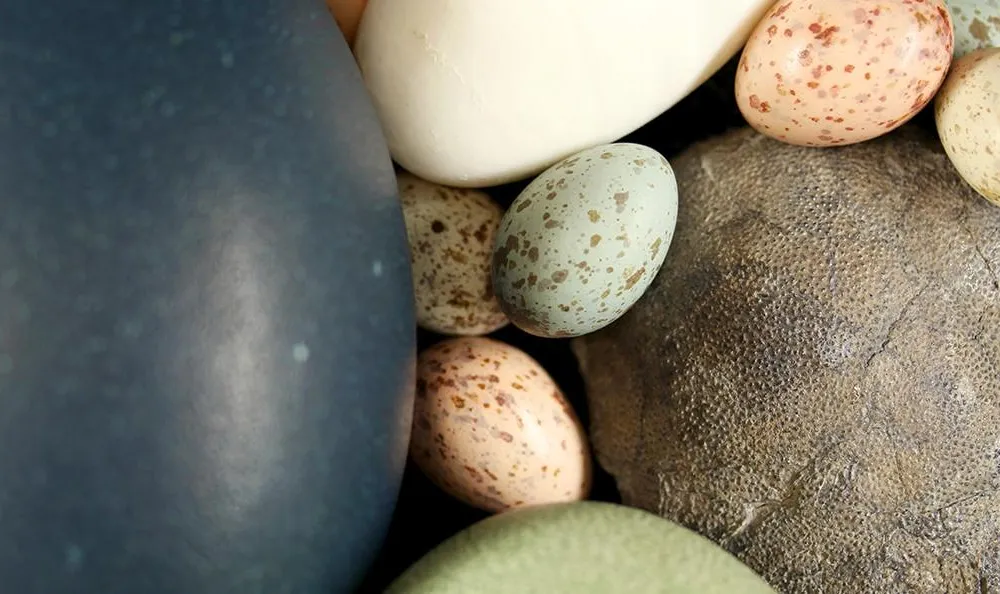
- Raman Microspectroscopy: This is a laser-based technique that can identify specific molecules by their vibrational signature, all without damaging the sample. Researchers shine a harmless laser on a tiny area of the eggshell and collect the scattered light to see the “fingerprints” of pigments. Using Raman spectroscopy, a 2018 study systematically surveyed Cretaceous fossil eggshells for pigment residues. They detected the two pigments responsible for all modern bird egg colors – protoporphyrin IX (reddish-brown pigment) and biliverdin (blue-green pigment) – in non-avian dinosaur eggshells as well as an extinct bird’s eggshell. For example, an oviraptorid dinosaur’s eggs showed presence of these pigments, implying the eggs were originally blue-green in color and likely speckled. The Raman method was crucial because it did not require removing any shell material; the same technique could be applied to Mesozoic bird eggshells if available. In fact, by mapping pigment distribution across the shell, scientists could tell if an egg was uniformly colored or patterned. Some dinosaur eggs showed pigment concentrated in certain layers or spots, suggesting spotted or speckled patterns, much like many modern bird eggs.
- Geochemical Signatures: Beyond Raman, other non-destructive or minimally invasive geochemical analyses help infer color. One approach is UV-Vis reflectance spectroscopy, where UV light is shone on shell fragments to detect subtle absorption features of pigments (this has been tested on sub-fossil eggs). Additionally, when small samples can be spared (a tiny flake), techniques like high-performance liquid chromatography mass spectrometry (HPLC-MS) have definitively identified pigment molecules in Cretaceous eggs. In one pioneering study, Wiemann et al. (2017) used HPLC-MS on Late Cretaceous eggs (including an enantiornithine egg and various non-avian theropod eggs) and found biliverdin and protoporphyrin still present. This confirmed that some dinosaur (and presumably early bird) eggs were not white, but colored. While HPLC-MS is technically destructive (powdering a small sample), it set the stage for using Raman as a follow-up, which museums prefer due to its non-invasive nature. Importantly, these chemical signatures are stable over tens of millions of years when protected within the mineralized shell, allowing scientists to reconstruct the original egg color palette. For museum reconstructions, this means we are no longer limited to painting all dinosaur/bird eggs white or guessing – we have evidence-based colors (e.g. a bluish-green base with brown speckles for oviraptorid eggs, akin to modern emu or guinea fowl eggs in appearance).
- Inferences from Nesting Ecology: Even if direct chemical testing isn’t feasible, scientists can infer egg color from nesting behavior (a truly non-invasive deduction). In modern birds, there’s a clear pattern: species that nest in the open (exposed nests on ground or in trees) often lay camouflaged or colored eggs, presumably to hide them from predators or for parent-offspring recognition, whereas cavity-nesters or buried-nesters (like owls or megapodes) lay white, unpigmented eggs since the eggs are hidden from view. Applying this logic to fossils: if evidence suggests a Mesozoic bird built open nests (for instance, if eggs are found in what appears to be an open sand nest, or if the adult is small and likely could not bury eggs), one can hypothesize the eggs had some color or pattern for camouflage. Conversely, if the species likely buried its eggs completely (analogous to crocodiles) or perhaps nested in sheltered cavities (though most Mesozoic birds were ground or shrub nesters as far as we know), their eggs might have been plain white. This ecological inference is supported by the discovery that colored eggs evolved in dinosaurs concurrently with the shift to open nesting. For example, troodontid dinosaurs and primitive birds that laid eggs in partially open nests show pigment evidence, whereas large dinosaurs like titanosaurs that buried eggs en masse do not. So for a given extinct bird, scientists evaluate its nesting style (from sedimentology, clutch arrangement, adult size) and then make an informed call on egg coloration. Museums often explain this by analogy: e.g., “Because this Early Cretaceous bird likely laid its eggs in an open, ground nest, its eggs may have been blue-green with speckles for camouflage, similar to plover or tinamou eggs today.”
Statistical and Phylogenetic Modeling
To synthesize all these data points, researchers use statistical models and phylogenetic inference to predict egg characteristics. These approaches combine modern and fossil data in a rigorous way and are especially useful when direct evidence is scant:
- Phylogenetic Inference (Ancestral State Reconstruction): By mapping egg traits (size, shape, color, shell type) onto the evolutionary tree of birds and their dinosaur relatives, scientists can estimate what the eggs of ancestral birds were like. For example, by including data from crocodilians, non-avian dinosaurs, early birds, and modern birds, a model can infer the probability that the common ancestor of a certain clade had a given trait. One such analysis found that many traits once thought unique to modern bird eggs (asymmetrical shape, hard calcified shell, open nesting incubation) actually arose earlier in maniraptoran dinosaurs [2]. This means when reconstructing a particular Mesozoic bird’s egg, we consider where it sits on the tree. If it’s within Enantiornithines (the dominant Cretaceous birds), we know from related finds that enantiornithine eggs were hard-shelled, with at least two shell layers and low porosity [5]. We also know Enantiornithines are more derived than oviraptors/troodontids but outside modern birds, so we infer their eggs might be intermediate in traits. Indeed, a statistical phylogenetic study suggests that contact incubation (parents sitting on eggs) and very large egg-to-body size ratios evolved later in the avian lineage [1]. Early birds likely had smaller eggs and did not fully brood like modern birds, which affects how we reconstruct their nesting pose in museum dioramas (perhaps the adult was near the eggs but not fully weight-bearing on them).
- Regression Models and Trait Correlations: Researchers apply regression equations derived from living animals to estimate unknown values for fossils. A prime example is the relationship between pelvic width and egg size. As mentioned, the width of the hip canal sets an upper limit on egg diameter. By measuring the fossil pelvis and using a regression from extant birds, one can predict egg breadth. Combined with an assumed egg shape (elongation ratio), this yields an estimated egg length and volume. Deeming & Mayr (2018) did this for numerous early birds and then went a step further: using engineering formulas and modern egg strength data, they estimated how much mass an egg of that size could support before cracking [1]. They discovered the predicted egg strength was below the adult bird’s body mass in most cases – implying those birds could not safely sit directly on their eggs. Such quantitative modeling strengthens qualitative inferences (like “maybe they didn’t brood”). Another statistical tool is multivariate comparison of egg shape. Researchers can plot known eggs (length/width, volume, asymmetry index) of modern species and see where a fossil egg would fall in this “morphospace”. If we only have a fragment but can guess asymmetry, we can narrow down plausible shapes this way. One study did a morphospace analysis for a Cretaceous egg from Spain (Sankofa pyrenaica), finding it fell between typical non-avian dinosaur eggs and modern bird eggs in shape – supporting it as an intermediate, likely from a bird-like theropod [10].
- Case Study – Giant Egg Prediction: As a cross-check of modeling approaches, consider a scenario where eggs are unknown: the giant Early Cretaceous bird Confuciusornis (which fossils show was quite large and had medullary bone indicating it was breeding-active). No eggs of Confuciusornis have been found, but scientists predicted its egg size by scaling from pelvic canal metrics and the egg-body size ratios of related theropods. The result suggested an egg of only a few centimeters, far smaller relative to body size than modern bird standards. This aligns with the idea that early birds retained a more reptilian strategy of laying smaller eggs. Additionally, phylogenetic models indicate Confuciusornis likely still had two functional ovaries like non-avian dinosaurs (producing two eggs at a time), in contrast to modern birds’ single-ovary system which produces one larger egg at a time. Such an inference is drawn from its placement in the evolutionary tree and the reproductive traits observed in its dinosaurian cousins. Thus, statistical and phylogenetic modeling not only provide numbers (egg size, clutch size), but also help infer reproductive strategy – which in turn informs how we reconstruct both the eggs and the behavior of the parent in museum exhibits.
Summary of Methods and Examples
The table below summarizes the key non-invasive techniques for estimating extinct bird egg traits, along with what each method reveals and an example from recent research:
| Method | What It Estimates | Non-Invasive Approach | Example from Literature |
| Comparative Anatomy & Allometry | Egg size & shape from adult size or analogs. Predicts egg volume, dimensions, clutch size by comparing to modern relatives. | Uses extant bird/reptile egg data and fossil measurements (e.g. pelvis width) with no damage to fossils. | Pelvic canal width used to predict egg mass in early birds, showing they laid smaller eggs than expected for their body size. |
| Nest Site & Eggshell Evidence | Shape, texture, and incubation mode inferred from nest layout, eggshell microstructure, and pore density. Also links eggs to species. | Observation and micro-imaging of fossil nests, eggshell fragments (SEM, light microscopy) – no sampling required beyond already exposed fragments. | Donut-shaped egg clutch of an oviraptorid indicates pair-laying and open (partially buried) nest style. Low shell porosity and tri-layered shell in a Cretaceous egg fragment identified it as a bird egg (enantiornithine) and suggested open-air incubation. |
| Imaging (CT Scans & 3D Modeling) | Internal structure, exact shape, and volume of eggs; presence of embryos; allows digital reconstruction of crushed eggs. | X-ray CT scanning penetrates rock to image eggs/embryos; photogrammetry creates 3D models from photos – both are non-contact methods. | CT imaging of a Mongolian egg revealed an enantiornithine bird embryo inside, confirming egg shape and shell structure without breaking the egg. Photogrammetry has been used to model and 3D-print a dinosaur egg for exhibits, preserving the fragile original. |
| Paleocolor Chemical Analysis | Shell coloration and patterns (pigments like blue, green, brown) and surface chemistry. | Raman spectroscopy (laser scan) detects pigments in situ; X-ray/IR spectroscopies identify compounds without destroying the shell. | Non-destructive Raman scans found blue-green biliverdin and brown protoporphyrin pigments in a Late Cretaceous theropod eggshell, indicating it was colored and speckled. Inferred similar coloration for related Mesozoic bird eggs that were laid in open nests. |
| Statistical & Phylogenetic Modeling | Egg trait predictions (size, shape, number, parental care) using evolutionary context and stats. | Computational analysis using datasets of living and fossil species – no impact on specimens. | Phylogenetic models suggest many “bird-like” egg traits (hard shell, asymmetry) originated in dinosaur ancestors. Regression models applied to fossil data showed early birds’ body mass would likely crush their eggs, implying they did not brood directly. |
Conclusion
By integrating these non-invasive methods – from the microscope to the mainframe – scientists can paint a detailed picture of Mesozoic bird eggs without ever having seen one intact. A museum reconstruction of an Early Cretaceous bird’s nest, for example, might feature a cluster of modest-sized, slightly elongated eggs with a smooth, matte surface and a muted blue-green tint with flecks. This portrayal would be grounded in evidence: the adult’s size and pelvic anatomy (for egg size), known eggshell microstructure from related birds (for shell hardness and texture), the sediment and fossilized nest arrangement (for how eggs were positioned), and chemical studies of dinosaur eggshell pigments (for color). Each inference feeds into the next, creating a scientifically credible reconstruction. As new techniques develop – higher-resolution scanners, more sensitive spectrometers, and larger comparative databases – our estimates will become even more accurate. The holistic, non-destructive approach outlined above ensures that we both learn from and preserve the fossil record. In the end, although we may never find a fossil of every Mesozoic bird egg, these methods let us peer back in time and understand how the earliest birds protected and nurtured their young, bridging a gap between dinosaurs and the birds that fill our skies today.
References
The information and examples above are drawn from peer-reviewed studies and museum case reports, including analyses of dinosaur eggshell isotopes and pigments, reviews of Mesozoic bird reproduction, non-destructive imaging case studies, and methodological advances in paleontology and museum science. These illustrate the state-of-the-art techniques now illuminating even the most elusive aspects of ancient life.
- Deeming, D. C., and Mayr, G. 2018. Pelvis morphology suggests that early Mesozoic birds were too heavy to contact incubate their eggs, Journal of Evolutionary Biology, Volume 31, Issue 5, 1 May 2018, Pages 701–709, https://doi.org/10.1111/jeb.13256
- Varricchio, D.J. and Jackson, F.D. 2016 “Reproduction in Mesozoic birds and evolution of the modern avian reproductive mode,” The Auk 133(4), 654-684, (10 August 2016). https://doi.org/10.1642/AUK-15-216.1
- Deeming, D. C. 2022. Higher level taxonomy affects body mass and femur length as predictors for egg size in birds. – Ornis Hungarica 30(1): 21–29. DOI: 10.2478/orhu-2022-0002
- M. Tagliavento,A.J. Davies,M. Bernecker,P.T. Staudigel,R.R. Dawson,M. Dietzel,K. Götschl,W. Guo,A.S. Schulp,F. Therrien,D.K. Zelenitsky,A. Gerdes,W. Müller,& J. Fiebig, Evidence for heterothermic endothermy and reptile-like eggshell mineralization in Troodon, a non-avian maniraptoran theropod, Proc. Natl. Acad. Sci. U.S.A. 120 (15) e2213987120, https://doi.org/10.1073/pnas.2213987120 (2023)
- Varricchio DJ, Balanoff AM, Norell MA. Reidentification of avian embryonic remains from the cretaceous of mongolia. PLoS One. 2015 Jun 1;10(6):e0128458. doi: 10.1371/journal.pone.0128458. PMID: 26030147; PMCID: PMC4452496.
- Bailleul, A.M., O’Connor, J., Zhang, S. et al. An Early Cretaceous enantiornithine (Aves) preserving an unlaid egg and probable medullary bone. Nat Commun 10, 1275 (2019). https://doi.org/10.1038/s41467-019-09259-x
- Meijer, H. 2017. Duck egg blue and oviraptor green: study reconstructs colour of dinosaur eggs. https://www.theguardian.com/science/2017/oct/11/duck-egg-blue-and-oviraptor-green-study-reconstructs-colour-of-dinosaur-eggs
- Wood, J. 2018. Bringing Fossils into the Digital Age: Using photogrammetry methods to better study, share and interpret NPS paleontological resources. Park Paleontology News – Vol. 10, No. 2, Fall 2018. https://www.nps.gov/articles/park-paleo-fall-2018-photogrammetry.htm
- Wiemann, J., Yang, T.-R., Sander, P. M., Schneider, M., Engeser, M., Kath-Schorr, S., & Norell, M. A. (2017). Dinosaur origin of egg color: Oviraptors laid blue-green eggs. PeerJ, 5, e3706. https://peerj.com/articles/3706/
- Lopez-Martinez, N. and Vicens, E. 2012. A New Peculiar Dinosaur Egg, Sankofa Pyrenaica Oogen. Palaeontology, Vol. 55, Part 2, 2012, pp. 325–339. https://onlinelibrary.wiley.com/doi/pdf/10.1111/j.1475-4983.2011.01114.x

